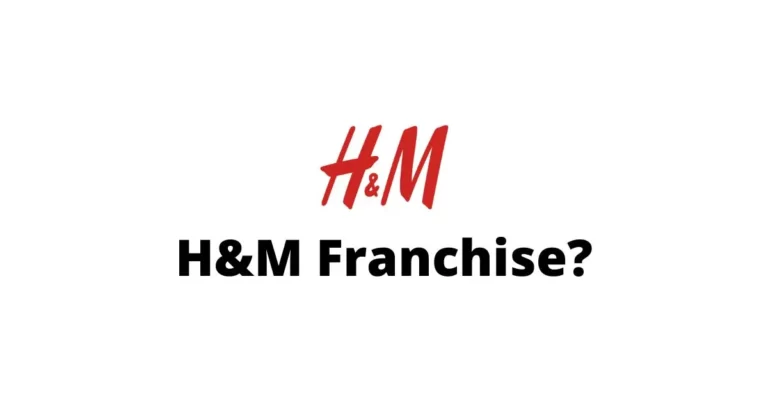Lululemon Franchise Opportunities, Cost, and Business Model
If you are looking for Lululemon franchise opportunities, cost, and business model? Then you came to the right place. Here you will get complete details about the Lululemon franchise. If you are into yoga and sports business then Lululemon is one of the best franchises for you.
Lululemon Athletica is an apparel company that sells yoga wear, running shoes, and training clothes. It has been successful in marketing a certain lifestyle rather than just a product. It is a Canadian athletic apparel retailer industry that has more than 490 stores and a net income of around US$588.9 million.
Is Lululemon Franchise Profitable?
The simple answer to this question is yes Lululemon franchise is profitable but you have to consider several things before you join Lululemon Athletica such as its earnings, what is the annual revenue of the company, fees, and joining costs.
First, let’s talk about the actual figures.
The company’s strategy is based on promoting its “Lululemon Athletica” and “Ivivva Athletica” products as conducive to a fun and healthy lifestyle.
This has been a successful strategy for Lululemon as the company can price its products at a higher price. People are even sporting the company’s products like trendy clothes and not just for exercise purposes.
As a result of its successful strategies, the company’s earnings per share were up to $1.66 for the fiscal year ending in February 2015, from $0.86 for the fiscal year ending in January 2011. Now, these figures may vary as of 2022. The revenue of the company is near about US$4.4 billion.
During this period, sales increased to about $1.8 billion from $ 711 million. While the company’s strategies have helped it create its niche, it has not always been a smooth journey for this company that was founded in Canada by Chip Wilson in 1998. Lululemon has endured some controversy along the way, even when he had to remember Luon yoga pants in early 2013.
From these figures, you can conclude that the Lululemon franchise is one of the profitable ones if you are interested in the franchise. You should go for it.
Lululemon Franchise Opportunities
If you are interested in apparel such as yoga pants, sports shoes, and joggers then you can for the Lululemon franchise. On 31 August 2021, they Launched a new high-performance yoga franchise with the introduction of Instill Tight. You can visit Lululemon’s official website to know about its franchise opportunities.
| Company Type | Public Company |
| Industry | Retail |
| Founded | 1998 |
| Founder | Dennis J. “Chip” Wilson |
| Headquarters | Vancouver, British Columbia, Canada |
| Number of Locations | 491 |
| Area served | North America, Asia, Europe, Oceania |
Lululemon Franchise Cost and Fee
The cost of a Lululemon franchise cost starts from $9000 to $9500 as per the data available online. You can also contact the Lululemon franchise for more details about the franchise cost. With a $9500 cash investment, you will also get training and support from the franchise.
If you want to know the actual cost and fee of the franchise, I suggest that you should visit the official website of Lululemon using this link and ask them what you want to ask.
Lululemon Business Model: Explained in 5 Points
Target Market and Offers
The company’s offerings include clothing such as pants, blouses, shirts, and jackets that people can wear while doing physical activities like running and practicing yoga. In addition to clothing, the company also sells accessories such as yoga bags, socks, and mats.
While the company’s products are primarily aimed at women who aspire to a healthy lifestyle while balancing a busy life, the company has expanded its reach by also incorporating men and youth. Buoyed by sales of its products targeting men, Lululemon is looking to open a men’s-oriented store in New York City only in late 2015.
Marketing and sales strategy
Lululemon sells its products through a network of stores that it owns and operates, as well as directly to customers through online sales. In early 2015, the company operated more than 300 stores in the United States, Australia, New Zealand, Canada, the United Kingdom, and Singapore. Lululemon believes its stores help you stay in touch with customers and get feedback while maintaining greater control of your brand.
The company’s online sales, which have been growing, help it reach a broader market. Additionally, the company sells to wholesale customers such as gyms, gyms, and yoga studios as a way to enhance its brand image. Other avenues of sale include warehouse sales and sales through showrooms and temporary locations.
Manufacturing outsourcing
Another aspect of Lululemon’s business model is that it outsources its production. It has contracts with suppliers in Southeast Asia, South Asia, China, and other countries. Only a minuscule one percent of its products are manufactured closer to home in North America, as Lululemon sees it as a way to quickly respond to changing market trends.
Aplenty Risks
Lululemon has been successful with its business model, but investors should be aware that the company faces various risks, such as consumer tastes. Furthermore, this is a competitive market, and competitors in the fitness apparel sector include Nike (NKE), Adidas (ADDYY), and Under Armor (UA). And the company’s business model makes it highly dependent on suppliers.
The Bottom Line
Lululemon’s business model has made the company successful, and it has carved out a niche for itself in the market. Furthermore, the company has growth plans, including international expansion plans that could open new markets for Lululemon. The company does not pay dividends and withholds its earnings to finance its growth plans. However, investors must be alert to the risks of strong competition, fickle consumers, and potential supplier problems.
Lululemon Franchise Success
Some analysts, however, believe that the Lululemon phenomenon will not last. The model of shortage of stock translates into a rhythm of production that is not matched by demand, which forces the company to “walk the tightrope”, according to Abram Brown in Forbes magazine, and constantly expose itself to a potential supply problem.
According to Johanna Bennet, the house “will not be able to maintain the price premium for its products forever,” which is where its true – and soaring – profit margin resides. Her strategy, which is incredibly effective so far, leads to stagnation.
For both experts, the interests of Lululemon necessarily go through the expansion of its offer – through men’s clothing and not only for yoga, lines that it has already begun to exploit – and international expansion. Only time and its ability to repeat its boom in other national markets will tell if Lululemon becomes the next great international textile giant or if it will be, as many point out, the next major commercial disappointment in the US market.
New Stores of Lululemon Franchise
According to the information provided, Lululemon opened its new showroom in the luxurious Polanco neighborhood of Mexico City, in the hands of Grupo Exalta, a Mexican company that also works with international brands such as Crabtree & Evelyn.
Sometimes this new space will also become a meeting point for consumers and the community, with fitness, wellness & mindfulness activities.
Lululemon, founded in 1998 and based in Vancouver, Canada, is currently led by Laurent Potdevin. Lululemon Athletica Inc. also runs Ivivva, a more youthful sports firm for girls ages 6 to 14.
As of January 29, 2017, the company operated 406 stores under the Lululemon and Ivivva brands in the United States, Canada, Australia, the United Kingdom, New Zealand, China, Hong Kong, Singapore, and South Korea, Germany, Puerto Rico, and Switzerland.
History of Lululemon Franchise
The union of specialization and originality has been a great success for Lululemon, a company of Canadian origin, which in the same place is dedicated to selling high-end sportswear and teaching yoga sessions.
The history of this brand, which has women as its main audience, began in 1998 when its founder, Chip Wilson, opened the doors of his first store in Vancouver. The success of the business led them to go public in 2007 and, a year later, they already had 85 points of sale distributed between the United States, Canada, and Australia.
Today the company Lululemon, which is known as “the Nike of women”, is valued at about $10 billion and is listed on Nasdaq at $76 a share.
To the reasons for its success, we must add its commercial strategy, based on limiting the number of garments of each model, a very limited stock that makes customers go immediately with each launch.
All an example of how to exploit the profitable world of sports fashion differently.
When it went public, in 2007, no investor gave a dime to Lululemon. The shares of this small company, which produces high-end sportswear and also organizes yoga sessions in the same place, were sold for a mere 2 dollars at the time, and no one would have imagined that the brand could even aspire to compete with the great sportswear houses.
Today the ticker LULU is synonymous with success in the American NASDAQ: its shares are paid at $76 and the company, valued at nearly 10 billion, is already bigger than giants like JC Penney or Abercrombie & Fitch. One of the “Nike for women”, as they have already titled it, is a commercial phenomenon endorsed by the benefits that the company showed in its last exercise and that have a good part of the commercial and financial analysts of the United States reeling, or trying, how a company halfway between the clothing store and the fitness center can star in one of the loudest booms of recent commercial history.
Since its listing, the company has grown spectacularly.
For many North American analysts, LLululemonis the example that the Apple Formula can be applied – and work – outside of what is strictly Apple. The company, founded by Dennis Chip Wilson in 1998 under the brand name Lululemon Athletica, was born as a women’s yoga clothing house. The first store was opened in Vancouver and also included a small yoga studio, a hybrid formula that it kept in successive stores that it opened throughout North America. In 2008, ten years after its founding and just one after going public, Lululemon already had 40 stores in Canada, 38 in the United States, and 7 in Australia and had established fruitful franchises with retail companies. fitness and gyms like Physique 57, Corepower, or Yoga.
Nothing in its strategy is conventional, starting with what is perhaps its most distinctive feature: its commitment to low stock. In Lululemon, stocks are limited and take time to replenish, if replenished. This is what they did with their celebrated Wunder Underpants, which disappeared from the market once stocks ran out even though demand only increased. An exercise that led to them losing immediate sales but which has proven pedagogical in the long term: Lululemon customers now know that if they want to buy a product, they should go to the store as soon as possible.
The strategy is based on the notion of exclusivity that Lululemon does not announce, but does drop on its products, and which ends up creating a legion of “fan customers”, in the words of its CEO Christine Day for The Wall Street Journal. Thus, Lululemon can afford tactics such as the absence of discounts and the maintenance of prices. Lululemon adopts a sales strategy that until now has only been practiced by automobile or computer consumables far above what its competitors can offer. If elastic yoga pants are around $25 in the US market – the price they have in Gap – in Lululemon they cost $125 on average and do not drop below $75.
The company also does not seem interested in expanding its offer as it grows, but its commitment is to improve the quality of the products considered emblematic, which redesigns and relaunches with different fabrics and improvements in the properties – aesthetic and functional – of its materials. Something similar to what car companies, computer products or telephone terminals do, which often re-launch a succession of products that are, in reality, the evolution of oneself through different technological stages.
Before you leave, check out these other franchise opportunities:
Thanks for reading this article on Lululemon Franchise.








